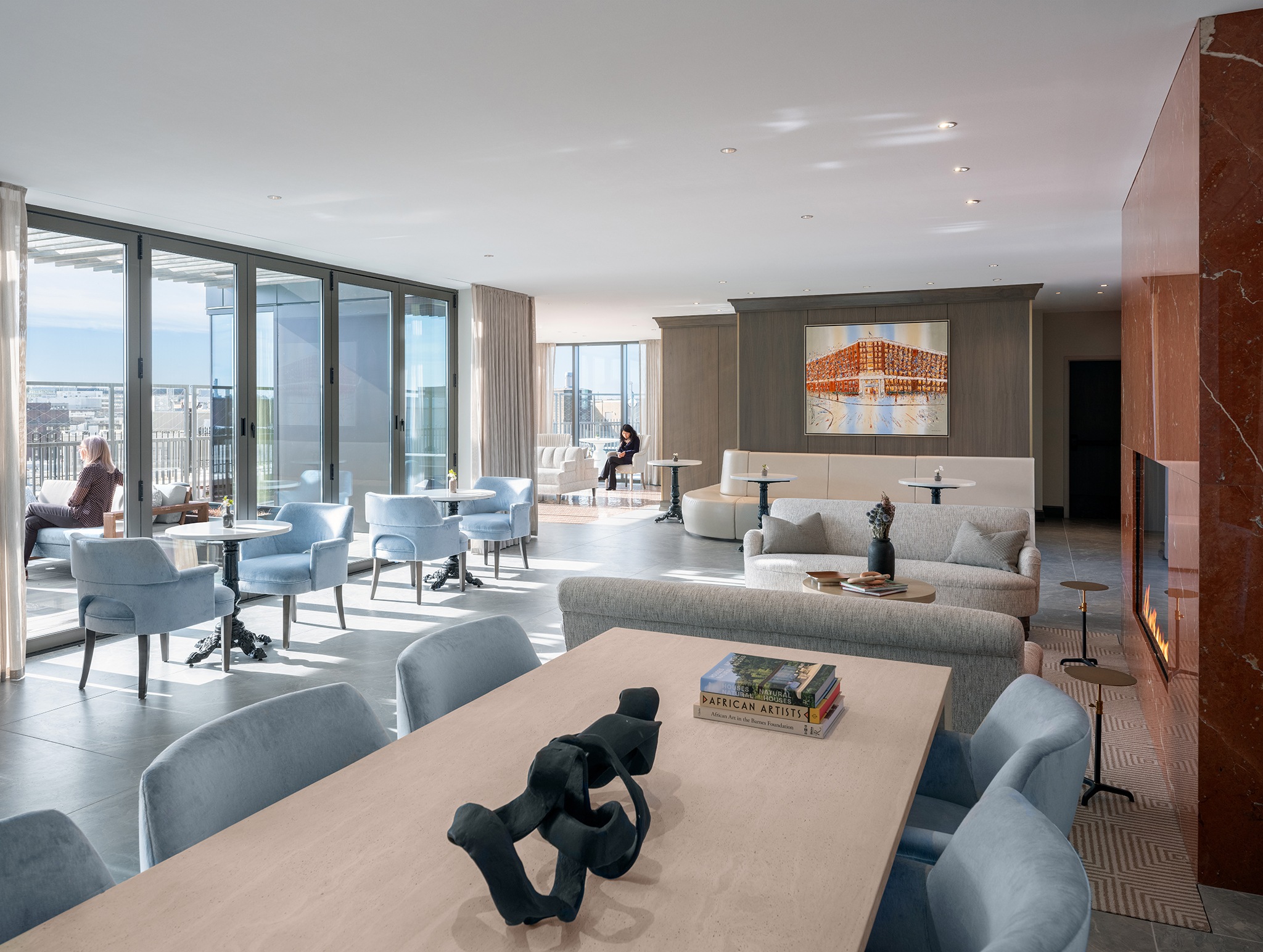This post is excerpted from a longer article co-authored by BBB Partner Jill S. Cavanaugh and James B. Adams, SVP of Real Estate Development & Acquisitions at Maplewood Senior Living, and originally published in Urban Land. The topic has also been presented at an AIA|DC symposium on adaptive reuse and will be presented at the Environments for Aging conference in March 2026.
Americans are living longer than ever before, and our attitudes toward aging are changing. The number of Americans age 65 or older will double by 2060; among those 65-year-olds, one of every four will live past age 90. As a result, the senior living industry has shifted its focus to improving the quality—rather than the extension—of life spans. Yet an individual’s needs change significantly as they age, and these needs will continue to evolve as the population becomes more expansive and diverse.
The generational seam between those born during the Great Depression and World War II (roughly 1928–1945) and the postwar Baby Boomers (born 1946–1964) marks a shift not just in age but also in expectations. Americans now turning 80 were shaped by an era of hardship and recovery, and they often prioritize practicality and frugality. In contrast, people in the younger cohort now entering their 60s and 70s came of age during postwar prosperity, and they expect far more from senior living—personalized environments, hospitality-driven services, and wellness-focused lifestyles. This inflection point presents both a growing demand for housing and a deep evolution in what that housing must offer.
Although developers are skilled at building senior living communities that satisfy basic residential and health care needs, and that provide programs and amenities to cater to a variety of lifestyles, creating authentic, home-like environments that feel instantaneously familiar for this younger cohort is far more challenging. Such nuanced characteristics are distinctions in the market and can greatly ease the transition into senior living communities, not only for individuals, regardless of acuity level, but also for their families.





